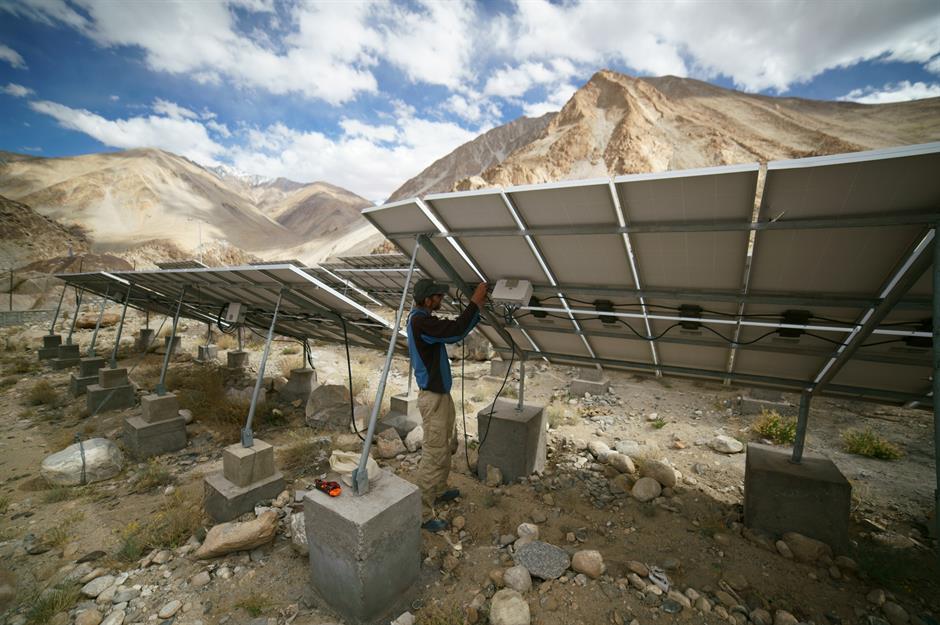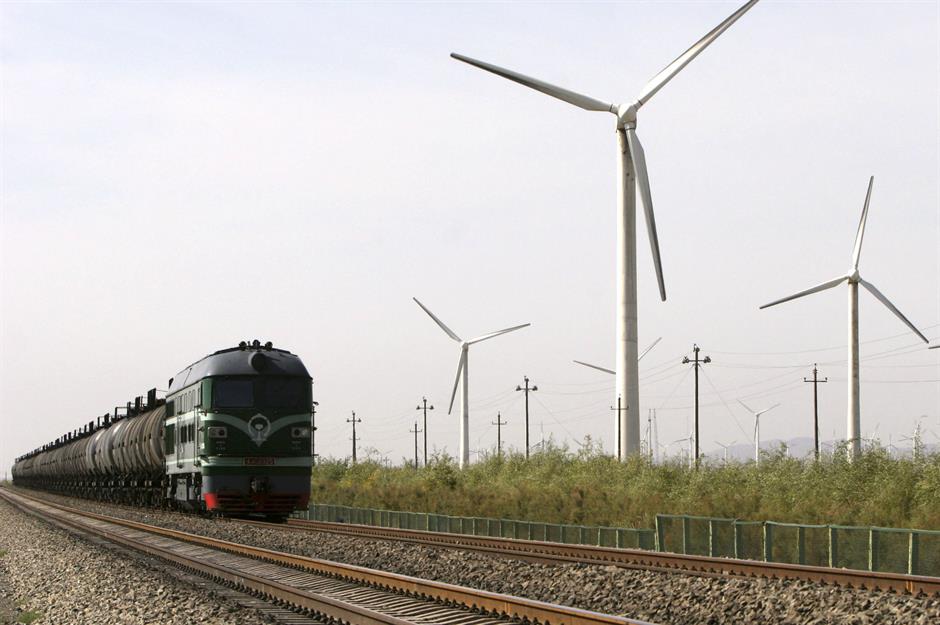Green-backers: Countries making money fighting climate change
The world’s greenest nations that are reaping the rewards
China: renewables investment
Of all patents for renewable energy issued globally, as of 2016 China has 29%. That's more than 150,000 patents, which underlines the focus of China's investment in the industry. So it's not a shock that the country has been dubbed a “renewable energy superpower” in a recent report issued by the Global Commission on the Geopolitics of Energy Transformation. The report argued that, as renewables come to replace fossil fuels globally, new energy leaders will emerge.
China: renewables investment
China: lithium exports
Often called "white petroleum", the metal Lithium is a raw material that is essential to the manufacture of batteries, which are used in eco-friendly electric vehicles. China is one of the largest electric vehicle (EV) manufacturers in the world, accounting for 37% of all passenger EVs sold globally since 2011, according to Bloomberg.
China: lithium exports
China doesn’t mine for lithium within its own borders, though. Rather, it invests in lithium producing nations like Bolivia (pictured), Australia and South America, having reportedly put $4.2 billion (£3.2bn) in lithium investment deals in the latter during the past two years alone. As global demands for EVs surges, China is predicted to dominate the market even more: by 2030, Goldman Sachs predicts 60% of all EVs made globally could be supplied by China.
US: renewable investment
US: renewable investment
In 2018, the US’s clean energy investment hit a record-breaking $64.2 billion (£49.6bn) according to a BloombergNEF (Bloomberg's New Energy Finance research arm) report. This was an increase of 12% on 2017. Big businesses such as Amazon and Google are the biggest investors, together owning one-fifth of all renewable commercial, industrial and institutional capacity. Meanwhile Starbucks hit headlines in April for investing in eight Texas solar farms, which will provide enough energy to power 360 of its stores.
Gabon: protecting rainforests
Rainforests are one of the world’s most important and fastest-disappearing resources, with the recent Amazon rainforest fires sparking global alarm. In Gabon, however, the incentive to protect the forests which make up 80% of the country isn’t purely environmental. The Central African Forest Initiative (CAFI) recently announced that Norway would be paying Gabon $150 million (£116m), in return for the country's promise to use the funds to protect its rainforests.
Read about the big money battle to control the Amazon
Gabon: protecting rainforests
Liberia: protecting rainforests
Gabon isn’t the only country to be paid for protecting its rainforests. In fact, a similar deal was made between Norway and Liberia back in 2014. Also agreeing to pay the country $150 million (£116m), Norway’s aid was promised in return for Liberia's promise to stop cutting down its trees.
Liberia: protecting rainforests
Norway: renewable energy
Not just handing out huge grants, Norway is making money from selling its renewable power. Currently, Norway generates $1.2 billion (£927m) in revenues from renewables exports, but that figure is set to rise eight-fold by 2030, according to analysis of private and state investors by energypost.eu.
Norway: renewable energy
Wind energy is the most important export market among renewables, followed by solar power. Norway already exports most of its oil and gas, but the increase in renewables exports should fill this gap in the future.
Australia: renewable energy
Australia could be a global leader in renewable energy exports by 2050, according to a report from the Australian-German Energy Transition Hub. In the best-case scenario – and with the right policy support – the country could be poised to meet 200% of its electricity demand with renewables, meaning there would be plenty left for export.
Australia: renewable energy
UK: renewable energy exports
With renewables overtaking fossil fuels as the number one source of electricity in the UK in the third quarter of 2019, the future is starting to look bright for Britain’s clean energy sector. And the country is already exporting wind and tidal energy worth around $680 million (£525m) a year, to 37 countries across the world.
UK: renewable energy exports
Investment in the UK renewables sector is gaining momentum, too. In fact, 47 British firms signed 465 contracts worth up to $69 million (£53m) per company over the course of 2019 according to a report by RenewableUK. The offshore wind sector was the most significant, representing almost 70% of contracts.
Now read about the big companies leading the battle against climate change
Sweden: paid for other countries’ waste
An unconventional moneyspinner, Sweden is paid to receive other countries’ waste, which it uses to generate clean energy through waste-to-energy power plants. In 2014, the country received $800 million (£618m) for getting rid of 2.3 million tons of imported waste, according to Swedish news site SvD Näringsliv.
Sweden: paid for other countries’ waste
Scotland: renewable energy exports
Scotland: renewable energy exports
Wind power is Scotland’s greatest asset, making up around 71% of Scotland’s total renewable capacity in the first quarter of 2019 according to Scottish Renewables. Meanwhile in October 2018, Scottish Power became the first major UK energy firm to completely phase out fossil fuels and replace them with wind power. Based in the UK and taking energy from and supplying energy to that market, Scottish Power is currently owned by parent company Iberdrola, which is a Spanish energy firm.
India: exporting solar power
One thing India’s not short of is sunshine. With around 300 days of sunshine a year on average, the country is well-placed to make the most of solar power. So it’s little surprise that India has recently become the producer of the world’s cheapest solar power, according to an International Renewable Energy Agency (IRENA) survey released in May this year.
India: exporting solar power
Iceland: exporting geothermal power
Iceland meets almost all of its energy needs through renewable sources, with geothermal power providing 13% of the total supply. But it could soon start supplying other countries with geothermal power, too. In an experiment due to begin next year, scientists plan to drill 1.3 miles (2.1km) deep into magma that lies beneath the Krafla volcano. This is not the first attempt. In 2009 scientists at the Krafla Magma Testbed drilled a hole more than 1.2 miles (2km) below the earth’s crust hitting hot magma, which heated cold water and created steam. While it didn't manage to supply the Icelandic grid, and the test was stopped because of corrosion, the geothermal well was the most powerful ever, creating 30 megawatts.
Iceland: exporting geothermal power
The energy could then be sent across the ocean via underwater cables, reaching countries such as the UK and providing a renewable power supply. If successful, energy could be sent via a 620-mile (1,000km) cable called the IceLink to power 1.6 million British homes. However, plans for the underwater pipes were delayed because of 2016's Brexit vote. That said, the technology is still in its early stages and scientists say it could be 20 years before it becomes a reality.
Ticking timebomb: when with the world's natural resources run out

